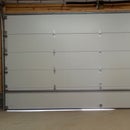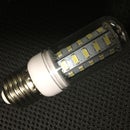Introduction: C4 Corvette Headlight Controller Repair
Cars with headlights which "pop-up" are subject to failure of these mechanisms and nomenclature which drives the moving parts. This is the process I used to repair my 1996 Corvette when its headlights stopped working. This is a C4 Corvette, so its dates range from 1983 to about 1996 if I am not mistaken.
The system in a nutshell revolves around a central control module which drives the lights up and down on command from the driver via light the switch in the cockpit. This control module once activated drives the light motors to rotate the lights up and turn on and the opposite when the switch in the cockpit is turned off.
At first this might sound like an electronics nightmare of computers and logic modules, but it really isn't at all. Its basically a matter of manipulating 12 volt lines in the controller to run the lights via a simple logic chip consisting of a series of Op-Amps that latch the command to either up and on or down and off.
this is not about the actual headlights, but about the module itself behind the headlight connection. One module drives both headlights, so it is a common point related to both headlights and is inline with the headlights circuitry. I am not going deeply into the circuitry in and out to the lights, as this is typically not needed as it is a simple circuit, and any designing or engineering has already been done.. this is just to repair the module.
Buying a replacement headlight module runs roughly 200 to 300 dollars, so this simple fix will save you multiple hundreds of dollars obviously.
Step 1: What Makes This Module Go Bad?
First lets look at the big question here...
What makes this module go bad? what is happening?
I have repaired about a dozen of these for friends and fellow Corvette enthusiasts which have basically all had the same issue. What fails is the relay lines fail and burn in two on one of the four lines in them. I can only speculate on what happens, but I think when the light motors age and thus take more power to flip the light assemblies, the burden hits the relay lines and burns the wires in two. I always have seen this affecting only one of the four which operate in pairs.I would suppose something physically holding the lights from moving would also cause this issue as well.
when the module fails, the lights will not raise or lower and require you to manually drive the motors up and down by turning the screws driving them for 10 minutes of turning.. Ugghh. It can be one side or both too. this could be a safety issue if your lights will not raise while you are driving and the night catches you driving.
Her I will show you pictures of what I see and how I resolve the issues I see.
Step 2: Step 1: Identify the Wires and Components
Make sure the car is turned off and nothing is energized without the key in the ignition...
When you pop the hood open, you can easily see the headlights on the front two corners of the car. They are in the down position and are upside down now.
Look for the connectors on each light and you should be able to trace them back to the control module which is located in the driver side headlight well (place where the upside down headlights hides away when off).
The control module has two connectors which are the input and output to the lights. this is the target and needs to come out to examine it.
Step 3: Step 2: Remove the Control Box
The control box is held onto the car with two screws with hex heads. Use your spanner or socket set to remove them.
Unclip the two connectors from the module. they are not the same, so there is no chance to mix them up. they have seals on them, so take care to not damage the weather seals so water can not ingress when connected.
Step 4: Step 3: Take the Box Apart - Look at the Board
The control Box is sealed on the backside with what looks like black sticky caulk. It seals the back panel to the front cover. This must be removed with a screwdriver. I suggest wearing gloves as the black sticky stuff gets everywhere and sticks to everything.
Once you get the plastic box apart, you can pull out the board inside, which is what we are after.
Step 5: Step 4: Examine Board Components & the Relay Data
This board is made of discrete components and none are really static sensitive as they all run on 12 volts. I do suggest taking precautions though as with all electronic components just like they could be damaged... Just in case.
There are a couple of FET power transistors and a hearty logic chip. I took pictures of their part numbers if you need then and your board was char-coaled or you can not see the part numbers.
I also put pictures of the actual four pole relay from Omron. I found these relays on eBay for around $6.00 each and readily available, as were the chips and FETs if you need them.
The Relay is an OMRON MY4-02-GM four line, 12VDC Relay
I have put a picture of the board here as well as the traces on the backside for you to be able to see. I do not have a schematic for the board, but I can make one if I need to.
Almost all the issues I have seen are the big relay in the center of the board. All the other components service this relay to drive the logic of the light system.
Step 6: Step 5: Relay Issues & Checks
The relay is always in contact in either of two states on each line it controls. There are four lines controlled simultaneously.
I take the moving arm loose on the relay so it is only supported by the four connecting wires. This allows you to ohm out the base contacts to the board as well as ohming the contact arms through the wires back to the board.
I have always found one of the wires burnt in two as the cause which is too much current driving through the wire from resistance of the motors or some other obstruction. I see this happen when drive motors go bad, so it might be a good idea to check your headlight motors and associated gears if you do this repair.
You can reconnect the relay wire by soldering it back in place, or replace the relay all together. If you replace the relay, I highly suggest buying a relay socket so you will just have to plug in your new one instead of it being hard-wired to the board as this original one is.
Put it back together and check it out connected to your headlights now.
Step 7: Step 6: Review Board Components & Basic Maintenance
Look over the board and see if any flaws were made putting it together. Bad solder joints is somewhat common, so I suggest redoing all the solder joints while you have easy access to the board. Also clean the contacts of the two connectors using some steel wool to remove any corrosion.
when you put everything back together, be sure to put "bulb grease" in all of the electrical fittings. This seals the physical connections of the pins and sockets to keep them from corroding or growing a gap to cause sparks. I would do this all over your car on all connections if you can.
Step 8: Step 7: All Done! Congratulations!
Now that it is all put back together and everything is working again, you can gloat since you just saved a couple of hundred dollars!! ...and you can drive your Corvette around at night again!
I hope this helps or give you confidence to tackle this job which is not that big a deal.













